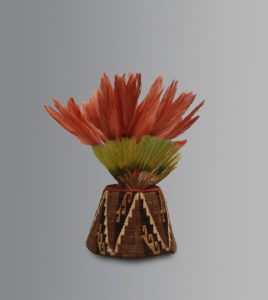 Idabel, OK (August 28, 2018)—The Museum of the Red River recently announced its main fall exhibit, Andean Textiles. The show features woven clothing, containers, and other textiles from the Andean region of South America. The exhibit opens September 11. A gallery walkthrough is scheduled for September 13 at 6:00 pm., which is preceded by a members-only mixer at 5:30. The walkthrough will be led by Paul Shepard, who has worked with collectors and museums nationwide to build, develop, and interpret Pre-Columbian textiles collections.
Idabel, OK (August 28, 2018)—The Museum of the Red River recently announced its main fall exhibit, Andean Textiles. The show features woven clothing, containers, and other textiles from the Andean region of South America. The exhibit opens September 11. A gallery walkthrough is scheduled for September 13 at 6:00 pm., which is preceded by a members-only mixer at 5:30. The walkthrough will be led by Paul Shepard, who has worked with collectors and museums nationwide to build, develop, and interpret Pre-Columbian textiles collections.
Textile manufacturing was the dominant industry in the Andean highlands for thousands of years. Its importance cannot be understated. In a cash-free economy, crafts often embody wealth, especially if everyone understands the relative values of the materials used and the time spent creating the work. In the prehistoric Andes, textiles represented such wealth. For example, cloth was collected as tribute, used to pay taxes, and as barter for other goods. As a result, a talented weaver could literally “make” money. Unsurprisingly, the most desired wives were women who demonstrated skills in weaving. Today, there is less direct comparison to money, but great prestige is still attached to quality textile works.
Andean Textiles closes November 11 and will be followed by Recent Acquisitions on November 20. Recent Acquisitions is annual exhibit that features various works of art featured within the past calendar year. Visit https://www.museumoftheredriver.org/exhibits for more information. [Pictured: Hat, ca. 1470 – 1536. Inka (Andes Mountains). Gift of Quintus H. and Mary H. Herron.]
###
